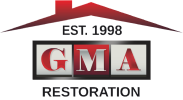
The roof installed by professional roofers over the top of any home looks like a simple structure made of wood and shingles, metal, or other external materials.
Yet as uncomplicated as a roof may look from the outside, roofers know the truth that a roof is an entire structural system and not just a few parts.
To understand how roofing can be so complex and why hiring roofers can be expensive, homeowners should have an appreciation of all the different components that make up a roof to shed some light on this subject.
Roofing Structure
The structural part of every roof is one that roofers build using trusses, rafters, and other parts that create the skeletal shape of the top of a home and then act to hold up the other components.
Beginning with the ridge beam, all the structural components connect together and then to the tops of the building walls to create a roofing structure that stabilizes the entire building.
Roofers and building contractors must carefully piece together what is essentially a house-top puzzle to create the integrity that stabilizes the home while also remaining stable under the weight of shingles and other materials in all kinds of weather.
Roof Coverings
The coverings installed by roofer services are what most people believe to be the roof itself, but these many components are only a part of the whole system.
Starting with the decking that is installed on top of the trusses and rafters, the coverings also include underlayment that acts as a moisture barrier and then the actual external materials like shingles, metal panels, ceramic or slate tiles, and more.
The external materials protect the entire system from the wind, rain, and sun.
Flashings and Trims
Flashings, seals, boots, and other trim pieces are what prevent the roof coverings from allowing water through in the unsealed corners and seams.
These trims must be very carefully installed by skilled roofers to be protective, as poor installation could still allow leakage which would eventually lead to water absorption by the underlayment and then rotting of the decking and support structure due to saturation.
Ventilation System
From the top of the structure to the bottom, roofing installations also incorporate essential ventilation components to protect the external materials and help keep the inside of the structure climactically controlled.
Roofers begin with a ridge vent at the peak of the installation which allows hot attic air to rise and escape the enclosed space, then continue on by installing multiple vent openings around the flat pitches which help with the same.
Gable vents along the flat sides of certain pitched architecture provide a means for cool air to be drawn in, as do critical under-eave vents that are installed at the bottom of the roof within the soffit.
Drainage System
Lastly, roofers will install a drainage system that guides water off the covering materials and away from the home foundation to prevent leakage and absorption of pooling water.
Roof valleys are finished in ways that promote water flow in certain directions and gutters, when properly installed to prevent shingle or panel edges from being submerged, channel it into the downspout and away from the building.
Roof Anatomy Includes A Complex Group of Components
Though it is easy to assume that the external materials installed by roofers are the main roofing component for homeowners to be concerned about, this is not always the case.
Coverings like shingles, metal, and tile all depend on the sturdy structure beneath them and the other roofer components installed to keep the building dry and structurally stable.
Knowing just how many parts there are to every roof should also illustrate how important it is to hire experienced roofers who can properly install coverings, as these protect everything else.
The shingles may be the last part on, but they protect the critical, complex parts beneath them to ensure a long-lasting roof.
Need Commercial Roof Damage Repair Services
GMA Restoration Can Fix Commercial Roof Damage Repair
Call 979-356-2392
